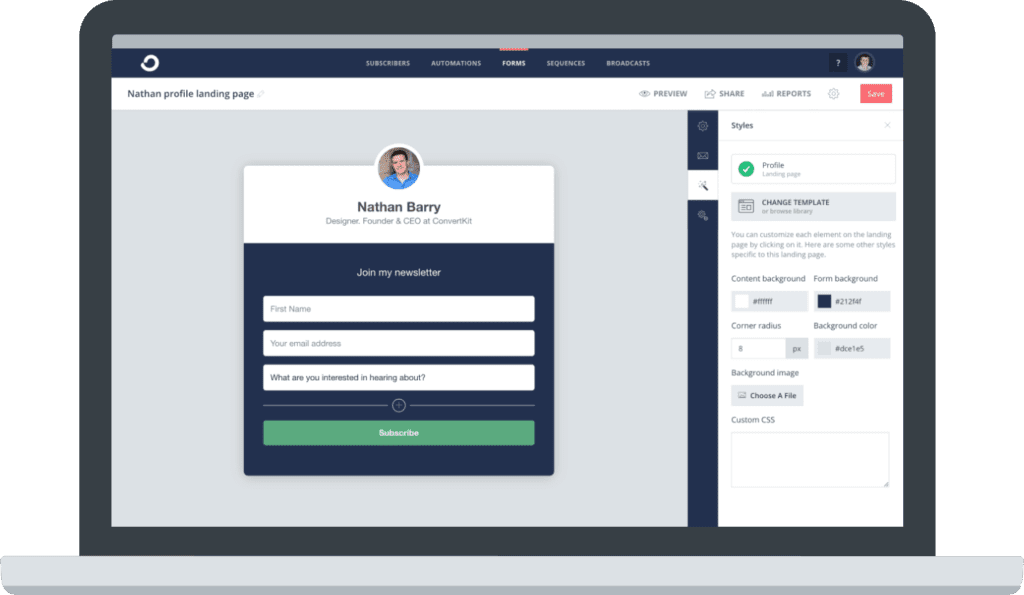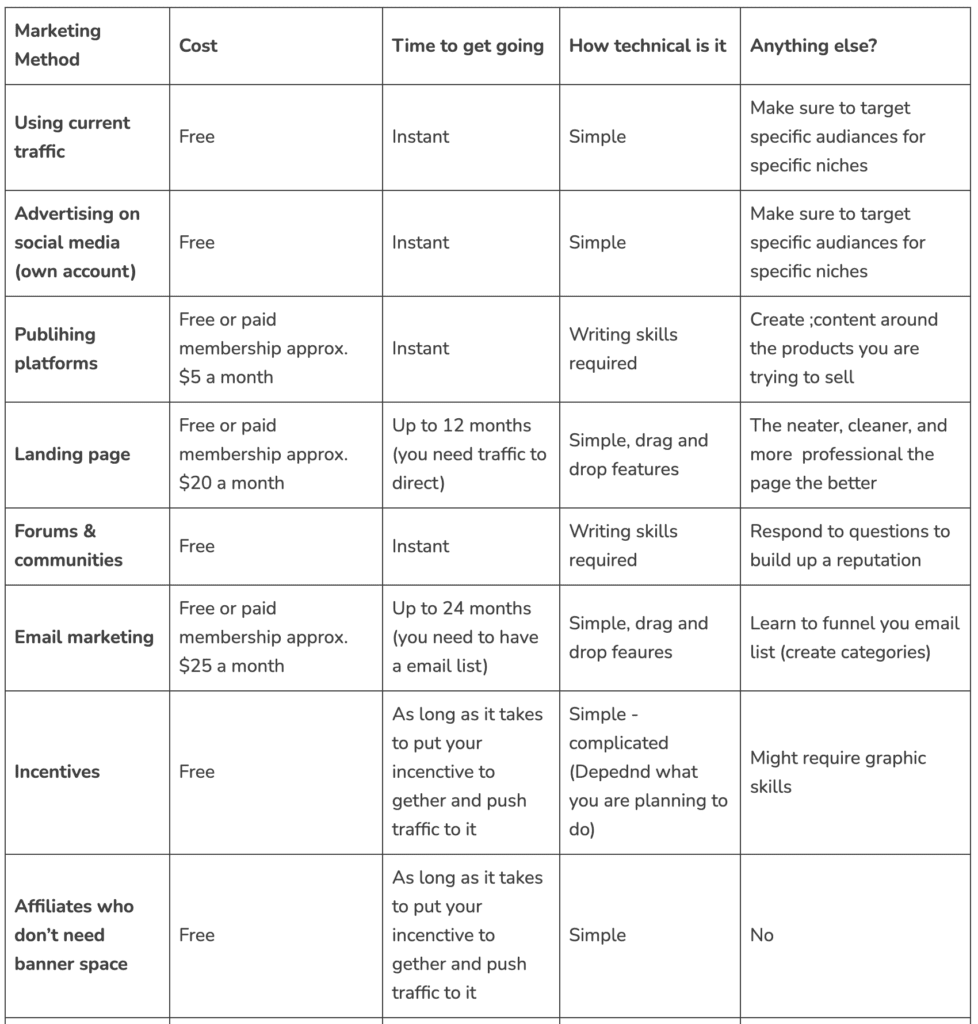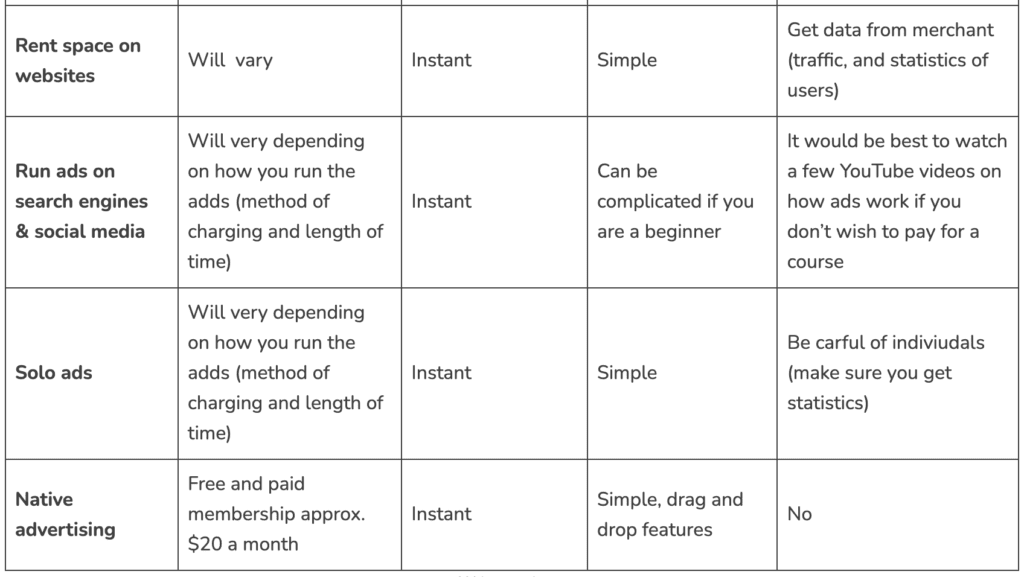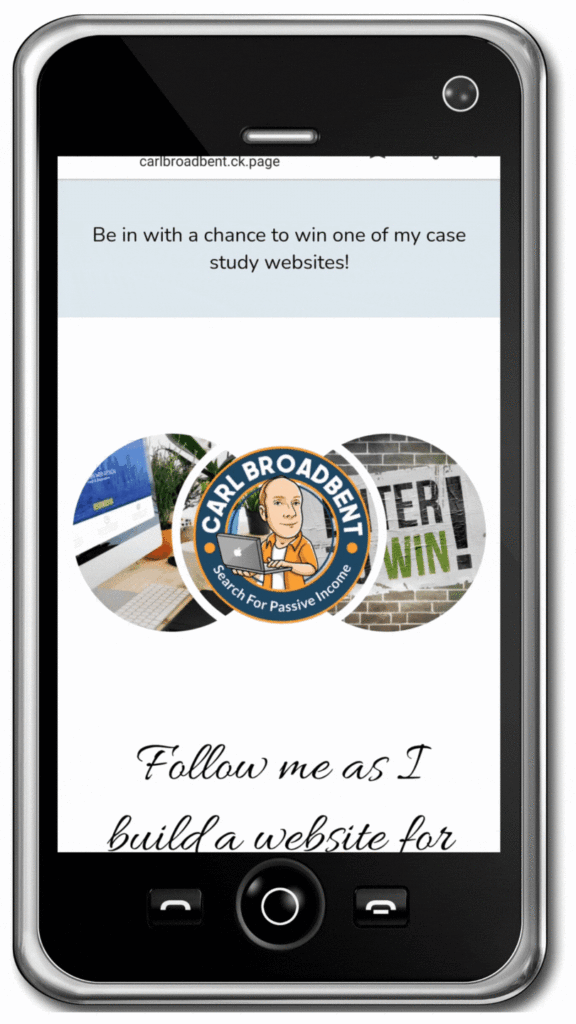
The affiliate marketing industry in the USA topped almost $7 billion in 2020. Hence, many individuals are jumping into action to get a piece of this pie.
However, many affiliate programs rely on having a website, and there aren’t many other ways to do it, right? You’d be surprised, actually.
Many ways to promote affiliate links without a website range from free publishing platforms to creating landing pages. Others involve ads on search engines, social media, websites, forums, email marketing, giving incentives for opt-ins, and working with affiliates that don’t require banner space.
If you don’t have time, money, or the know-how to create your own niche website but would like to jump into the growing industry that is affiliate marketing, this article is for you.
We will examine why perhaps having a website might not even be the best route for you to take, and we will discuss every avenue where you can place your affiliate links on the net that millions of people will view, without a doubt making you money.
Affiliate links overview
One of the best and easiest ways to earn a second income (and in some cases, it can become your primary source of income) is affiliate marketing.
In simple terms, this just means you promote and try to sell a company’s product, and in doing so, that company will give you a percentage of each item you sell.
There is no limit to what you can sell and how many affiliate programs you can sign up for.
You could sell electronics, sports gear, home décor, clothing, food, and anything in between, including specific niches in these categories.
It’s all up to you and what you think you could promote best.
Using a website (especially a blog) is a great way to draw internet traffic and get your readers to link to your affiliate products.
There are several drawbacks to this, however.
Affiliate marketing on your own website: several drawbacks
One is that you will need a website and tons of content that readers are engaging with.
You will also need a massive amount of traffic going to your site to be effective for your conversion rate.
Having a large audience will probably mean that you will need content that ranks on search engines.
This is sometimes pretty difficult to achieve, especially with competitive content.

Then, typically, your website will focus on a specific niche targeting an explicit audience, meaning if you have a website about gardening tools, for instance, then you won’t be able to sell that audience sports gear.
This is because your target audience will be primarily interested in gardening tools and will not be going to your website for sports gear.
Thus even though having a website could be excellent for your affiliate program, there are many ways in which you could achieve this result without all the stress.
Here are the best ways to promote your affiliate links without a website.
12 Best Ways To Promote Affiliate Links Without a Website
Below you will find the twelve best possible solutions to marketing your affiliate links without using your own website.
There are so many ways to do this that some of them we are sure you do not even know exist.
If used correctly these methods can take you affiliate marketing to new heights reaching millions of consumers.
1. Use your current traffic
If you have an online presence in any shape or form, your initial step would be to try and use that to your advantage.
Take note that we will cover some of these facets under their own headings because you will use these routes to obtain a following if you do not have one already.
For example, let’s say that you have an Instagram following, or perhaps you post your graphic design work on DeviantArt, and you have a fan base there.
Maybe you like to answer questions on Reddit a lot, or you have quite a following on Pinterest. It doesn’t really matter what digital outlet you use.
As long as you have a following, then you could start and utilize that to promote your affiliate links.
2. Advertise on social media
Traffic is the most crucial aspect of affiliate marketing. The more traffic (audience) you can show your affiliate link to, the more chance you will have to make a sale.
Keep in mind only 2% of individuals who click through your affiliate links actually purchase (conversion rate), so you are going to need tens of thousands of visitors.
Luckily enough, social media has traffic that reaches into the millions (if not billions), and more individuals sign up to these platforms every day.
It costs nothing to create an account and start posting your affiliate links on them.
What is terrific about social media platforms is that one viral post or video can accumulate a fan base into the tens of thousands overnight.
Another thing to consider is that some social media platforms are generic in a way, meaning you can promote anything you want, while others are more geared towards specific categories.
For example, you can create a Youtube channel on pretty much anything you want and share your affiliate links on there as long as it is not in violation of their policy.
Other social media platforms like ReverbNation deal with music, so it would be in your best interest to promote products that deal with music there.
3. Use free content publishing platforms
A publishing platform is different from social media because it is more like a blog in a way. You will write an article based on something (an idea, news, hobbies, etc.) and publish it on a website like Medium.
Medium is an excellent alternative to building your own blog because it has high domain authority (it will rank your content more easily), and it has a readership of nearly 100 million.
Having a blog would potentially limit you to one niche, especially when you are trying to rank your content.
However, on Medium, you could write 100 articles, every single one on a different subject, and it wouldn’t matter because their reader base is looking for anything and everything.
4. Create a landing page
An unwritten law that holds true time and time again is that consumers will only purchase from individuals they trust.
Without a doubt, the percentage of people who buy from trusted websites outrank anything else, but if you don’t have a site, your next best bet is to create a beautiful landing page that advertises your products with your affiliate links.
Instapage is a platform that allows you to build landing pages for your online marketing and promotional campaigns without needing to write a single line of code.
The experience is hassle-free, and in 5 minutes, you could have a landing page that looks neat, gorgeous, and professional.
Placing your affiliate links on here would benefit you greatly, and sending consumers to this page first could be the difference in increasing your click-through rates and thus your sales.
5. Use forums and online communities
Forums and communities are a great place to put affiliate links primarily because forums typically cover a specific topic (a niche).
Meaning the readers on the forum are there for a specific reason covering a particular topic, and your target audience is handed to you.
For example, thousands of forums cover anything from the stock market to mountain biking if you go onto Reddit.
This is not the only forum available, and you should be able to find popular ones on your niche (affiliate program) pretty quickly by doing a quick google search.
The best thing to do on forums is answer questions individuals pose and build up a reputation and sense of trust that way.
Then, at the end of each post, you can slot in your affiliate links.
6. Use email marketing
You wouldn’t believe it if I told you, but email marketing is one of the best ways to sell your products.
Approximately 25 to 35% of your revenue should be generated through email marketing.
You may think It is pretty challenging to grow a list of email accounts, but it is relatively easy. You would want to insert an email signup option on your landing page, which you could do by using a platform like Convertkit
You could then post your landing page on social media platforms like Facebook or direct traffic to it with ads (which we will still discuss).

Even though you may not generate straight conversions from your affiliate links at first, what you would do is offer the consumer some gift or reward for signing up to your mailing list (we will also discuss this in detail later).
With this strategy, you could quickly grow your mailing list from a couple of hundred to tens of thousands.
7. Give incentives to consumers
One way to generate traffic, grow your email list and start building a reputation is by adding incentives for your audience.
Typically, you will find that many good marketers will give something away for free if they sign up for a newsletter or register at a site.
This is so they can get the user’s email address and start sending them emails about their products which includes their affiliate links. You can even include your affiliate links in your incentive.
For example, let’s say you are part of an affiliate program that sells food, kitchen appliances, or utensils.
You could create a free ebook that the user would receive on signing up for your newsletter, which would be on your “great dishes of the world and how to cook them” landing page, on any ad you placed, or anywhere else.
This ebook could contain “the top 10 recipes in the world for amazing seafood.” In that ebook, you would place your affiliate links to get the ingredients, the tools, cutlery, or appliances the reader would need to make them.
Another type of incentive is asking users to sign up because you will be sending them coupons or discounts on the niche they love.
8. Work with affiliate programs that don’t require having your own website
Many affiliate programs will require you to have a website in order for them to place banner ads (or similar types of ads) on your site.
Affiliate programs like the ones from Ezoic and Mediavine are like this.
This could be problematic because unless you have a site that allows for banners or sidebars, you won’t be able to register with these affiliate programs.
Your best option is to sign up with affiliates that just give you links, such as Amazon, Clickbank, or any other sites that will generate links instead of full-on ads for you.
Don’t think that there aren’t that many; there are actually quite a few, and they cover a range of categories, including web hosting (blue host, Spidrweb Hosting ) musical instruments (MusiciansFriend), and many more.
Again a quick google search will help you out with an affiliate program that is specific to your niche.
9. Rent ad space on other websites
Many bloggers, vloggers, and independent website owners will allow you to rent ad space on their websites.
This could be a lucrative avenue to go down, but there are several factors you would need to take into consideration.
Firstly the site would have to relate to your niche or affiliate links; then, you would need to make sure that the site generates enough traffic per month.
This would ensure you have the best possible opportunity of converting clicks.
You would have to get a Google analytics datasheet of the users from the merchant of the site, and the pageviews of the site or specific page should be at least 10,000 views a month for you to consider this option.
This is especially true because you would have to pay for the ad space, so you would need to see an ROI (return of investment) that is larger than your monthly fee of renting.
Moreover, you would want to make sure that you are not paying too much to rent the space on this note.
One thing you could do is come to an arrangement with the owner where ad placement is not based on a standard price but clicks, meaning for each click of your ad, the owner would take a nominal fee.
10. Run ads on search engines and social media
Besides renting ad space from specific websites that draw lots of traffic, you could opt to place ads on search engines (like AdSense on Google) or social media platforms like Facebook or Instagram.
Landing pages could greatly benefit you here because Adsense would need to send individuals to a specific URL that you own, and instapage could help you with this.
Facebook ads also let you link to external sources like a landing page, or you could create the entire ad on the platform and just stick your affiliate link in there.
You can add almost anything to your ads from videos, to images, to buttons and text.
These ad campaigns are so easy to use, and both social media and search engine campaigns will help you by targeting the correct audience, control your spending limit, track your users, view statistics, and more.
11. Use solo ads
Solo ads are another form of ads similar to finding merchants with websites with lots of traffic.
However, these users will typically have an email list and sometimes a website.
Sites such as Udimi cater to this sort of affiliate program.
What you would do is find individuals on Udimi that are in your particular niche and hire them to send your ads (affiliate links) to the subscribers in their email list.
They could either charge you a flat rate or a fee based on clicks (as we have discussed).
This could be an advantage because sites like Udimi and their program give you a chance to yield instant commission.
Furthermore, they could also help you generate opt-ins. However, this is only if the merchant is running this sort of promotion.
We discussed having to get Google analytics data from merchants who would sell you space on their website, and you would want something similar in the way of Solo ads.
The merchant should be able to offer you some statistics and metrics for their email list if they are using a platform like Mailchimp or something similar.
Hence, be sure that you are paying for a service you know is worthwhile because some merchants could offer poor quality traffic that doesn’t covert.
12. Use native advertising
Without going into too much detail on what native ads are, they are sponsored content that matches the form and function of a platform. Using Adsense, Facebook ads, and the like could be considered native ads.
However, there are platforms such as Taboola that will allow you to set up a marketing campaign, and they will place your ads on specific websites.
This would be cohesion between Adsense and you finding a merchant with ad space on their website.
Taboola is a marketing platform that lets you create ads (letting you place your affiliate links in them), and they will do all the heavy lifting.
Again, these platforms offer significant benefits by placing your ads on websites with traffic, giving you data, metrics, and statics of all your campaigns, and more.
Affiliate links marketing without a website table overview


Conclusion
I discovered that although you can generate a lot of affiliate revenue from having your own website, it is not the be-all and end-all of affiliate marketing, and the are many ways to get around placing your affiliate links on the internet that you probably never even knew existed without having a website.
We even learned that having a website could hinder you in many ways if you don’t know how to attract traffic, get domain authority, and are planning on having many affiliate programs that cater to various niches.
We covered every viable option that there is on the internet in terms of being able to place your affiliate links almost everywhere, and some ways in doing so are free, and some cost a little bit of money (in some instances, a lot).
However, these are all viable options that could take your secondary income from affiliate programs and perhaps let you quit your day job if done correctly.
- Boost Your Amazon Influencer Earnings FAST!
- Boycotting Amazon – Is that why your commissions are so low?
- TikTok Ban: RedNote Emerges as an Alternative for TikTok Refugees
- How I Earn Extra Income with Journey by Mediavine
- Amazon Influencer Program Risks
Source list
Affiliate Marketing Tutorial For Beginners 2021 (Step by Step)
Can I do Affiliate Marketing Without a Website?
How to Make Money with Amazon Affiliate Marketing Without a Website

